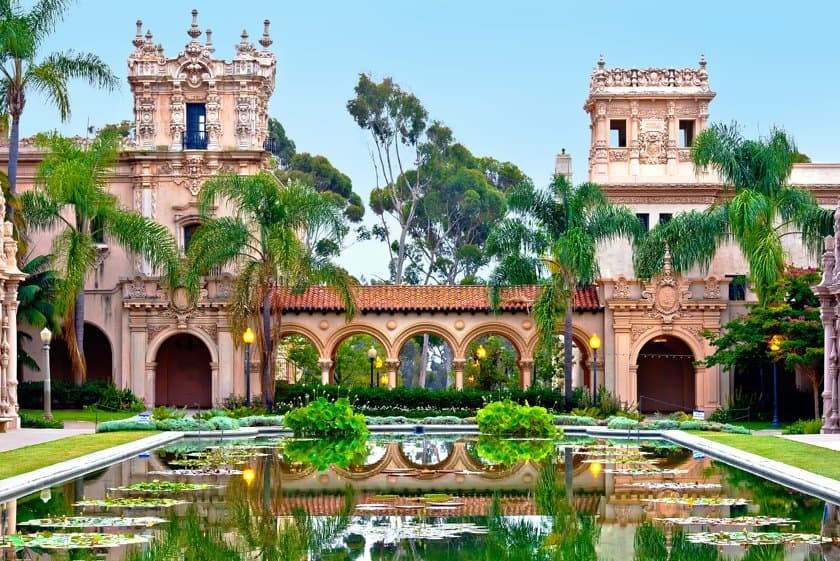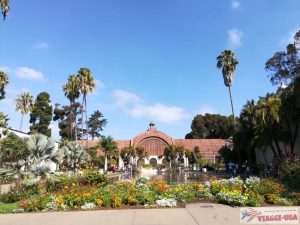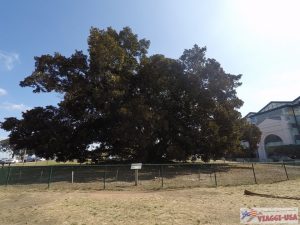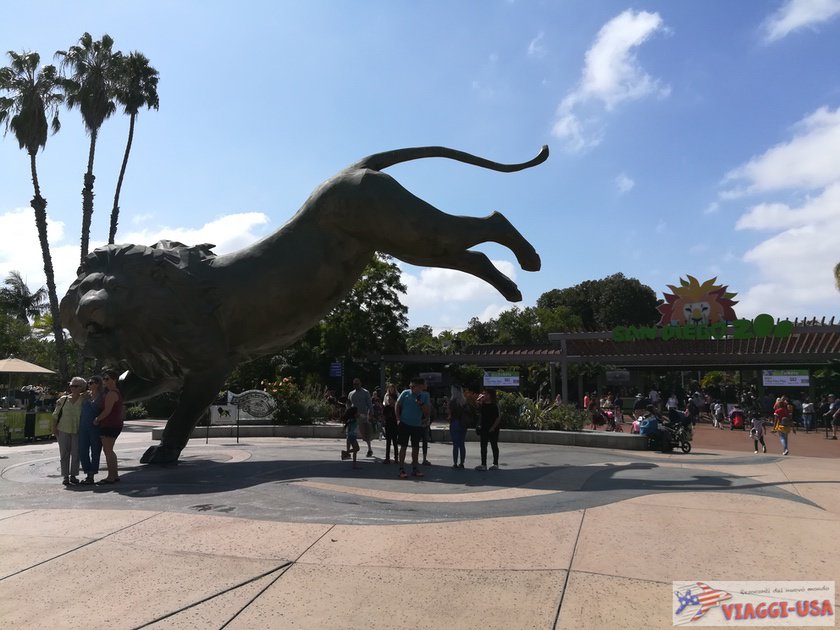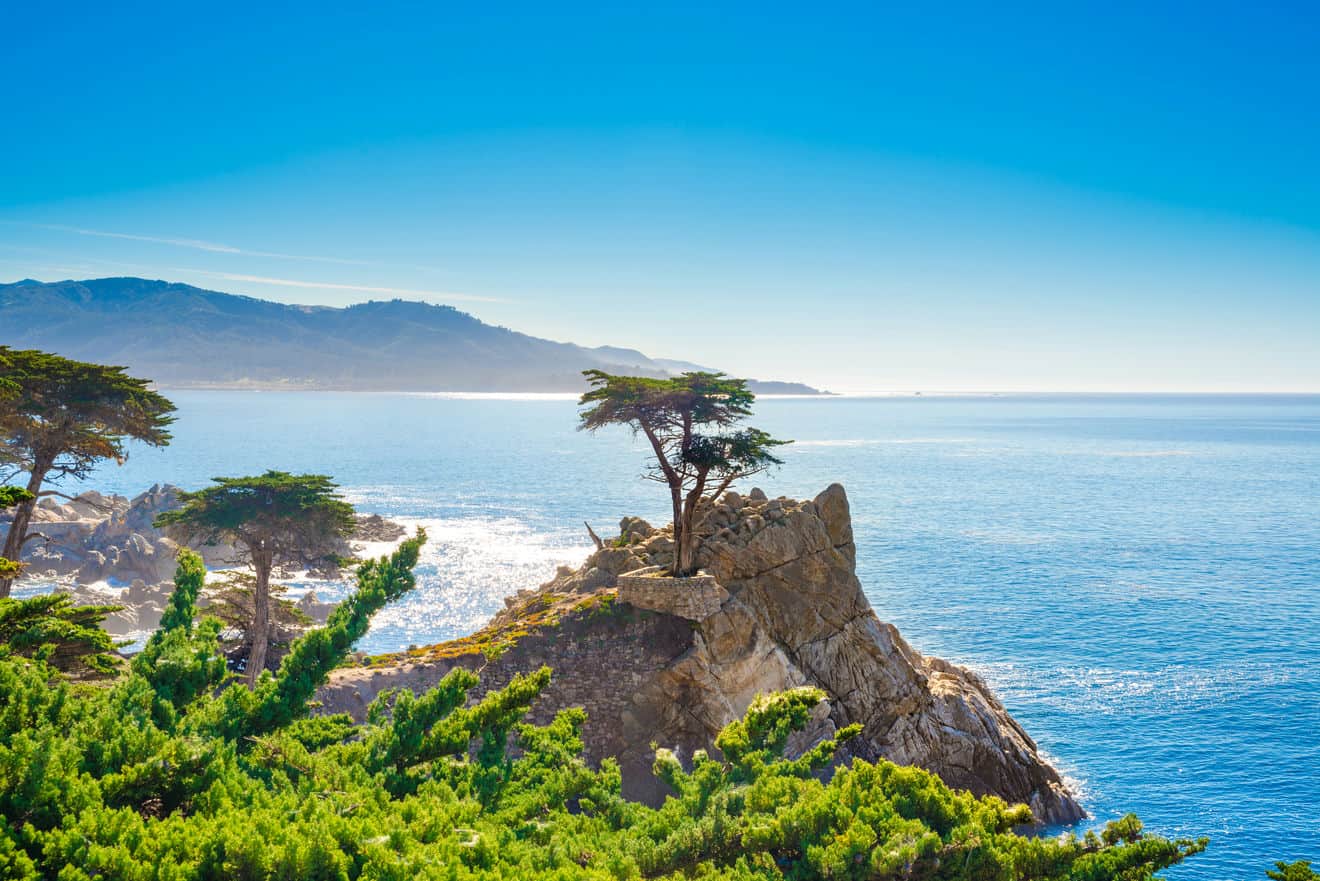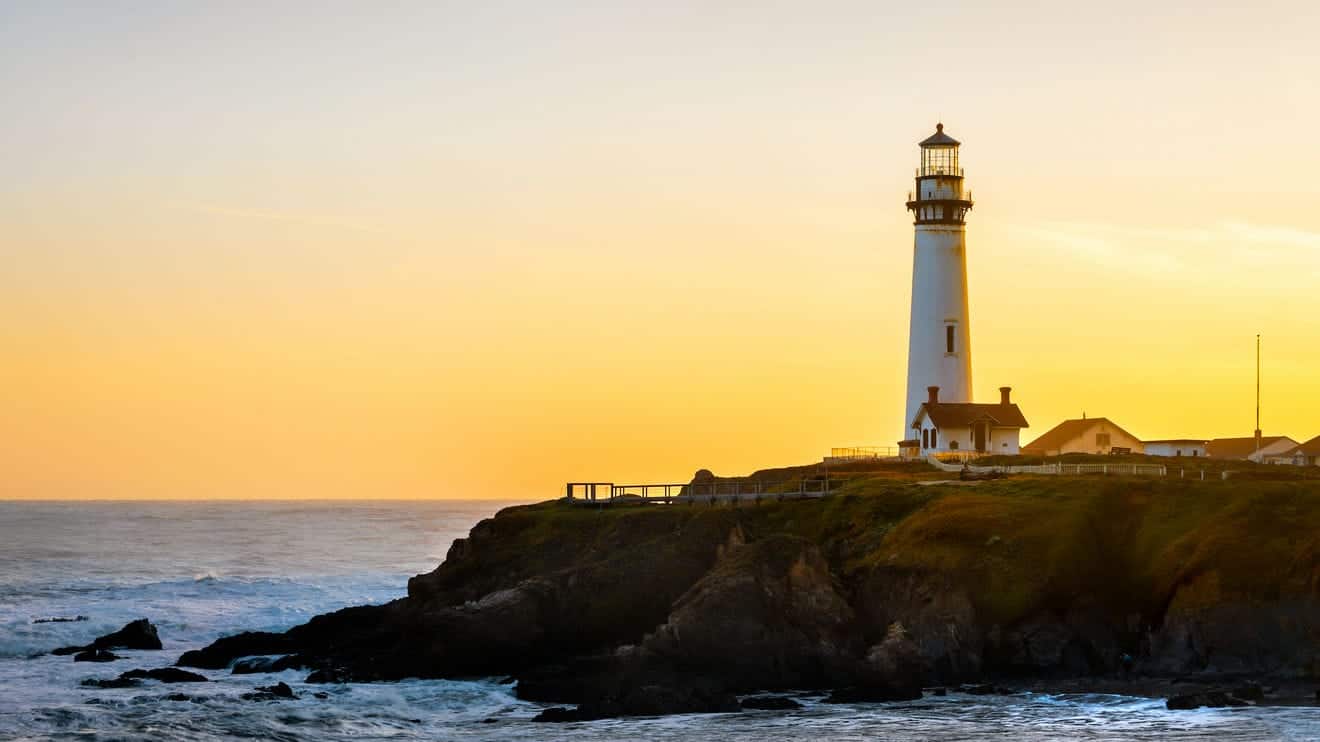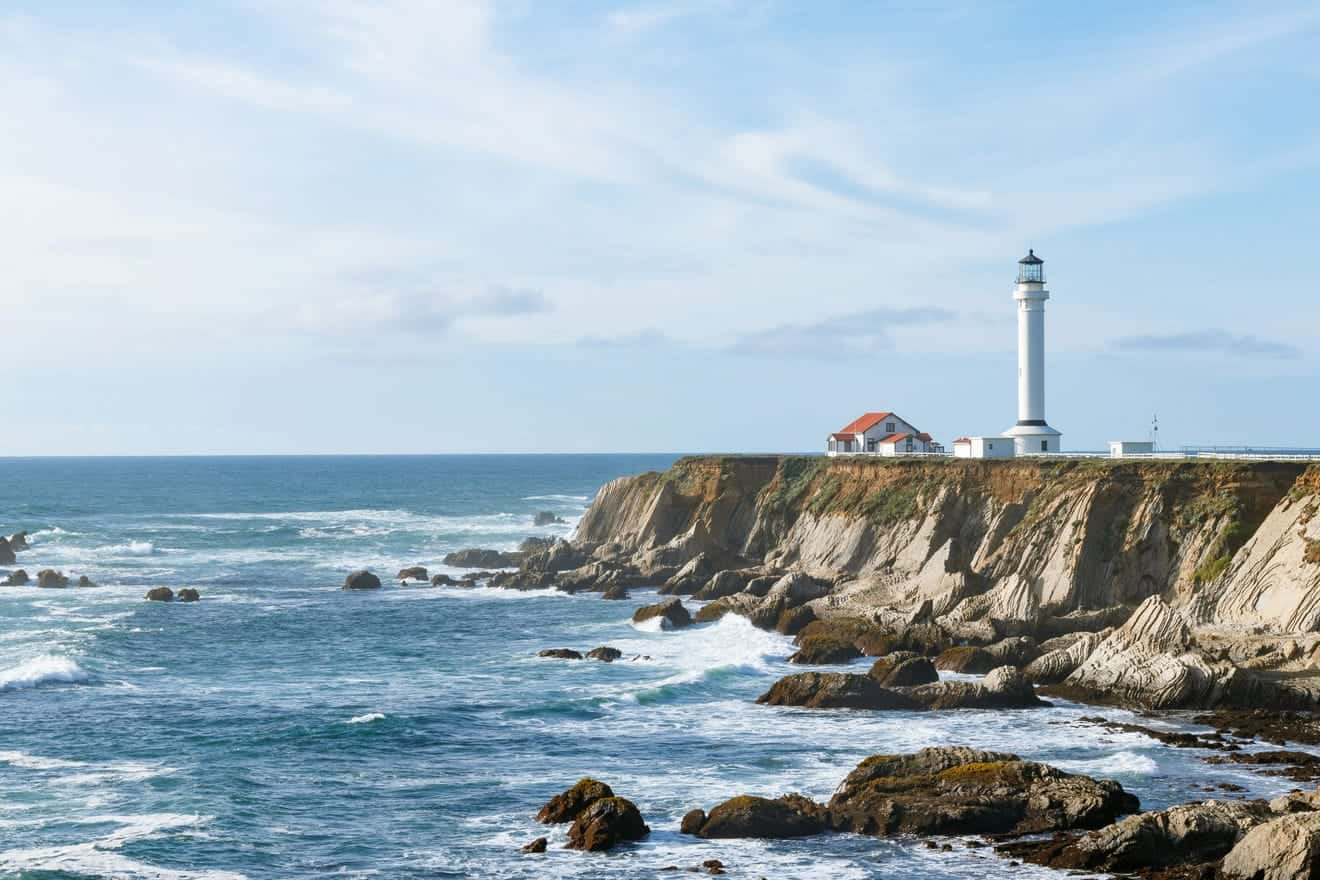Going to San Diego without entering Balboa Park would be like visiting New York City without taking a look at Central Park. The gigantic city park is part of the soul of this diverse city in California. Here art, architecture, crafts, and entertainment come together, along with the many gardens that make it up. Although we are talking about a park, for its size and richness of museums and monuments we could also define it as one of the city districts, like Gaslamp or Old Town.
In any season of the year, Balboa Park is a must-see destination during a visit to San Diego, whatever your preferences may be. It’s hard to remain indifferent to the beauty and diversity of the gardens, but the park goes beyond just the gardens. There are museums ranging from natural history to aerospace engineering, from toy trains to anthropology to contemporary art that offer visitors cultural enrichment. And let’s remember that Balboa Park is also home to the world’s largest zoo!
Contents
Location and Directions
When you open the city map, you will see the size of the park and it is not difficult to find a way to reach it, either by car or public transportation. Balboa is almost an exact rectangle and is bordered to the north by Upas St, to the east by 28th St, to the west by Sixth Avenue, and to the south, it reaches the San Diego Fwy arch.
There are several streets that lead to the park, but my advice is to take Park Boulevard, the road that cuts the park in half from north to south, in the middle of which you will find a large parking lot. You will be within walking distance from the information office, where you can find a map of the park and easily reach every attraction on foot. However, if you want to go to the zoo, head to Zoo Dr to reach the zoo’s parking lot.
The most direct way to get there by public transportation is to take Bus 7. Get off at the stop Park Blvd & Village Pl and within a few minutes, you can reach the information center on foot.
A Brief History
Balboa Park is one of the oldest parks in the United States. Founded in 1868, it was created thanks to the waters of the Colorado River, which made this originally semi-desert area green.
The park owes its name to Vasco Núñez de Balboa, a Spanish explorer who was the first to see the Pacific Ocean in 1513 when he crossed the Central American isthmus. That is how he understood the reason Columbus could never reach the Indies, since the American continent separated the two oceans. It is no coincidence that in 1915 and 1916, Balboa Park hosted the Panama-California Exposition, which celebrated the opening of the Panama Canal.
Throughout the twentieth century, the park has been the venue for major events, including international ones. Still today it is a prestigious place where many kinds of events are held, making it one of the liveliest squares in the city of San Diego.
Best Things to do in Balboa Park
As I mentioned before, the park is divided in half by Park Boulevard. The entire area east of the boulevard is occupied by golf courses and sports and recreation areas, including a remote-controlled car track. The interesting half for visitors is the western half and that is what I will focus on in this article. This whole area is divided in turn in half, from east to west, by El Prado, a long, largely pedestrian street, flanked by many of the park’s points of interest.
As you can see, Balboa Park can be visited without spending even a penny, but many museums or attractions require you to pay for a ticket. If you’re planning to visit more than one of them, it might be convenient to get a day pass (or a multi-day pass). Details can be found on this page.
Balboa Park Museums
The buildings that we find in Balboa Park were not built all at once, but have sprung up over time, in many cases thanks to the many events that took place in the park. With a few exceptions – such as the space museum – there are two main architectural styles: Spanish Colonial and also Spanish Revival, which is heavily influenced by Andalusian palaces.
Most of the buildings have been turned into museums or exhibition halls, which vary greatly in genre and theme. Given the myriad of possibilities in this boundless park, and assuming that you won’t spend more than a day there, I will dedicate a paragraph to the most interesting museums, while grouping the smaller or less relevant ones for visitors going to Balboa Park for the first time and are not familiar with the park. Let’s take a closer look.
The House of Hospitality and Casa de Balboa
The most photographed buildings in the park are undoubtedly the House of Hospitality and the Casa de Balboa. Or rather, to be more precise, you will see many pictures of the porch that connects them and that is placed at the end of the rectangular pond where the colorful carp swim and gives the idea of a Moorish courtyard, like the gardens inside the Alhambra of Granada.
The two Spanish Revival buildings are both well worth a visit. At the House of Hospitality, there is a restaurant but, more importantly, the Visitor Center. Here you can find all the information about the park and its museums, as well as a well-stocked souvenir shop. It is also the starting point for the two free weekly guided tours.
Meanwhile, at the Casa de Balboa, used by the Navy during the two world wars as a barracks and hospital, there is now a bar and three different museums.
- History Center Museum. This museum tells the story of San Diego through the objects and photographs displayed. It’s a way to learn about the city and its history. There is no admission fee, but a donation of at least $5 is suggested. It’s open every day from 10:00 am to 5:00 pm, but there may be closed days during the year because it also hosts private events. On this website, you can check the updated schedule.
- Museum of Photographic Arts. This gallery is dedicated to contemporary photography, but also hosts photography and film festivals. It is open Tuesday to Sunday from 10:00 am to 5:00 pm and there is no entrance fee, just an optional donation.
- Model Railroad Museum. Fans of trains and railways will not fail to be fascinated by this place. This is the largest covered exhibition of miniature trains in the United States. In addition to the permanent exhibition, themed events take place here throughout the year and there is a library dedicated to the railroad. The museum is open Tuesday to Friday from 10:00 am to 4:00 pm, and on Saturday and Sunday from 11:00 am to 5:00 pm. The ticket price is $12.50. Children under 3 years old enter for free, those from 4 to 11 years old pay $6, meanwhile seniors pay $9 and students under 18 pay $7.50. You can find the current prices and information about special events on the official website.
Prado House
The Casa del Prado is probably the most beautiful in the park. Built in 1915 for the Panama-California Exposition, this Spanish Colonial building is not really a museum; rather, it is used for various activities. Some rooms are home to art and youth organizations, as well as the City Symphony Orchestra and the San Diego Botanical Garden Foundation and Library. Other rooms, used for shows, meetings, and events, are rented and can therefore host public or private events depending on the moment.
Although the facade is already one of the most attractive things in the park, it is worth entering the inner courtyard, provided it is accessible. This is also rented for weddings, receptions, and private events. Especially on weekends during the summer season, therefore, you may find it closed. Under the porch, there are numerous statues of kings, conquerors, and missionaries. By reading the informational panels, you can learn a little bit about the history of this area.
Behind the Casa del Prado, but still connected to it, there is the Casa del Prado Theatre, a full-fledged theatre with a façade in the same style as the main building. On this website, you can find the schedule of the shows that take place there.
Balboa Park art museums
Balboa Park has five art museums, each with its own characteristics.
- San Diego Museum of Art. It is the main art museum in the park. It houses works ranging from Asian art to German Expressionism. In addition to the permanent exhibit, there are numerous temporary exhibitions, which you can discover on the official website.
The museum is open from 10:00 am to 5:00 pm on Mondays, Tuesdays, Thursdays, and Saturdays from 10:00 am to 8:00 pm on Fridays; and from 12:00 pm to 5:00 pm on Sundays. Admission costs $15 ($10 for seniors and $8 for students). - San Diego Art Institute. This contemporary art center aims to showcase local artists and promote artistic innovation in Southern California.
The museum is open Tuesday through Sunday from noon to 5:00 pm. There is no admission fee, but donations are welcome. - Timken Museum of Art. Both American and European pictorial art composes the collection, flanked by temporary themed exhibitions that alternate throughout the year. On the official website, you can find the latest temporary exhibits. Admission is free and free guided tours are also available by appointment. The museum is open from Tuesday to Saturday from 10:00 am to 4:30 pm and on Sundays from 12:00 pm to 4:30 pm.
- Mingei International Museum. A collection with more than 26,000 objects from all over the world that are made by artists and craftsmen for daily use.
- Museum of Man. Located inside a former church building, this museum is, without a doubt, the most extravagant museum in the city. From the history of ancient cultures to the most disturbing aspects of the tribes that populate the planet, this series of exhibits can leave a visitor amazed. Admission costs $13 (free for children up to 5 years old). It is open every day from 10:00 am to 5:00 pm.
San Diego Natural History Museum
The Natural History Museum is one of the best places to visit if you are traveling with children. From fossils to dinosaur reconstructions, from the most extravagant plants to insects, the museum tells the story of the plant and animal world in both visual and interactive ways. Every year there are also exhibits with specific themes.
The museum is open every day from 10:00 am to 5:00 pm. The regular ticket price is $19.95. Meanwhile, adults over 62 and students pay $16.95, and children aged 3 to 17 pay $11.95. Children under 3 years of age have free admission.
Ticket information for the San Diego Natural History Museum
Reuben H. Fleet Science Center
This is another great museum for those traveling with children that aims to show how science can positively influence the creation of a better future. The interactive and engaging exhibitions allow visitors to be like scientists. The center is constantly updated and renewed.
Connected to the museum there is also the Imax movie theater, where you can literally get immersed in the movie you are watching on the giant screen. Included in the ticket is the admission to one IMAX movie.
The museum is open Sunday to Thursday from 10:00 am to 5:00 pm, and Friday and Saturday from 10:00 am to 6:00 pm. The price of regular admission is $21.95. There are discounts for people over 65 ($19.95) and children under 12 ($18.95). Children under 3 years of age get in for free.
Automotive Museum and Air and Space Museum
In addition to the exhibition of miniature trains I mentioned earlier, in Balboa Park, there are two museums dedicated to means of transportation.
- Automotive Museum. This museum is dedicated to the history of cars, starting from the invention of the engine to the present day. The displays show images and every three months, the images change to show cars from different eras. The museum is open every day from 10:00 am to 5:00 pm. The museum ticket costs $12 ($6 for children up to 15 years old and $8 for students and for adults over 64 years old).
- Air and Space Museum. Aviation and space exploration are the themes on which this museum focuses. Airplanes and spacecraft, partly real and partly model airplanes and spacecraft, keep the visitor’s gaze up during the entire visit. The museum is open every day from 10:00 am to 4:30 pm. The ticket costs $19.95 ($16.95 for students and seniors, $10.95 for children aged 3 to 11).
Balboa Park Gardens
Out of the many museums and buildings in Balboa Park, you will surely find some that interest you and surely find some that interest you, but the great value of Balboa Park lies in its multiple large gardens, and each one is unique in its own way. Most of them are easily accessible, and while some will require you to walk a short hike, they are not challenging.
If you don’t have time to see all the gardens, I strongly advise you to at least visit the Botanical Garden, Alcazar Garden, the rose garden, and the cactus garden. If you are willing to pay, you can enter the Japanese Friendship Garden as well.
Japanese Friendship Garden
It is the only garden in the park with paid admission, but this should not stop you from going. It was created to commemorate the twinning between San Diego and Yokohama, and it makes visitors feel like they are in a real Japanese garden.
The path leads through bamboo groves, past a stream and two lakes with colorful carp, and ends at the Tea Pavilion, a Japanese pavilion where visitors can sip different types of tea and taste Asian cuisine. From bonsai trees to the largest trees, everything is taken care of down to the smallest detail, in perfect Japanese style.
The garden is open daily from 10:00 am to 7:00 pm in the summer (March-October) and from 10:00 am to 6:00 pm in the winter (November-February). Tickets cost $12. There is a discount ($10) for students and seniors. Children under 6 years of age enter for free.
Botanical Garden
The large greenhouse in front of the pond overlooking El Prado is one of the most photographed spots in the park, but if you can already appreciate it from the outside, it’s really worth entering. You will find yourself immersed in a rainforest, among over 2,100 tropical plants, ferns, and fragrant orchid flowers.
Walking in the greenhouse is definitely more relaxing than the chaos of tourists who usually crowd around the lake to take pictures with the colors of water lilies, water lilies, and big carp, while the lawn at the side of the greenhouse is the most suitable place to rest in the shade on sultry summer days.
Roses and Cactus Gardens
At the end of El Prado, past Park Blvd, there are two gardens that are connected and are very interesting.
The rose garden is a set of flowerbeds crossed by paths made of tiles, where you can admire hundreds of roses of every kind and color. In the middle of the garden, there is a small pavilion covered with wisteria, under which you can sit in the shade.
The cactus garden or desert garden is one of the most characteristic gardens in Balboa Park. You will be immersed in a desert environment with huge cacti and plants typical of both the desert and the African savanna.
In another area of the park, which can be reached via a path that branches off from the Pan American Road, there is the 1935 Old Cactus Garden. This garden, also dedicated to desert plants, is older than the previous one and is smaller, but it has its own charm and it is worth it to visit it and take a walk here.
Alcazar Garden and Casa del Rey Moro Garden
In the park, there are two Spanish-style gardens. The Alcazar Garden is inspired by the gardens of the Alcazar in Seville and those who have been to Andalusia will immediately notice the characteristics of Moorish gardens. Low boxwood hedges border the flowerbeds in which 7,000 seasonal plants are planted. The paths are interrupted by fountains decorated with turquoise, yellow and green tiles.
The Casa del Rey Moro Garden is inspired by the Moorish gardens of Ronda and consists of a central square with a fountain and the garden area that surrounds it. It is accessed from the back of the House of Hospitality. However, this garden is not always open to the public because it is often rented for private events.
Other gardens in Balboa Park
In addition to the gardens mentioned above, the park also has other gardens or green areas with special features.
- Zoro Garden. This is a sort of pit that was designed for the 1935 exhibition as a nudist colony. Yes, a garden in which a group of nudists spent their time, visible from above like in a zoo, during the exhibition period. For two years a nudist colony from Indiana spent their days here playing, reading, cooking. In truth, it seems that they were rarely completely naked, but used minimal underwear. Today it is a breeding ground for butterflies. In fact, you can see many cocoons and chrysalises attached to rocks and trees. The roots of the gigantic fig tree, which wrap around rocks and walls, are one of the most striking things in the garden.
- Palm Canyon. When you are here, it feels like plunging into a tropical oasis descending into this short but charming canyon with over 450 palms of 58 different species, as well as fig, eucalyptus and other majestic trees.
- Australian Garden. Located in the Gold Gulch Canyon, this garden, still in the process of being fully defined, was created in 1976 with a donation from Australia of many plants native to their country. Plans for new walking paths in this area are currently underway.
- Centenarian Fig trees. In the park, there are two fig trees, of two different subspecies, that are especially interesting because of their age and therefore their size. The first one is located behind the greenhouse of the botanical garden and is easy to spot because of its height. The second, which is even more impressive, is located nearby in Village Place. It has now been fenced in to protect its roots. Planted in 1915, it is now so large and majestic.
Spanish Village Art Center
As you walk through the doors of the Spanish Village Art Center, you will find yourself in the most colorful area of the park, a large square with pastel-colored tiles full of stalls selling handicrafts. All around, there are little shops and workshops where you can see the masters at work. The glass-blowers are especially amazing to watch as they make unusual objects in colorful blown glass.
Other monuments and attractions of Balboa Park
As you can see, Balboa Park has a high concentration of attractions. While some require a more thorough visit such as the museums mentioned above, there are also points of interest that are worth visiting that will not take long.
- Spreckels Organ Pavilion. If you see some kind of outdoor theater, you might not immediately realize what it actually is. It’s a large organ (reeds are covered when not in use) that is used regularly for concerts and can be heard throughout much of the park. The stage in front of the organ is also used for theatre or dance performances.
- Centro Cultural de la Raza. It is an artistic-cultural center that aims to promote and preserve Latin American art and culture. Depending on when you come here, you may find different exhibitions, or come across theatrical, musical, or dancing performances.
- Worldbeat Cultural Center. A former water cistern has been converted into this cultural center and its walls were completely painted. Today, there are cultural, artistic, recreational events, and activities.
- Veteran Museum & Memorial Center. As you can easily guess, this museum is dedicated to veterans who fought in the various wars that the United States has participated in. It is open Tuesday to Sunday from 10:00 am to 4:00 pm. Tickets cost $5 ($4 for seniors 65, $2 for students, and free for children under 12).
- Marston House Museum & Gardens. Built by George W. Marston in 1905, this house and its huge garden have become a city museum since 1987. It is especially interesting for early 20th-century architecture enthusiasts. The museum is open Friday to Sunday from 10:00 am to 5 pm. It is only accessible on guided tours at a price of $15 ($7 for children aged 6 to 12, $12 for seniors and students).
- House of Pacific Relations. As you walk through the park, you may come across a series of little houses, each with a different flag. It is a consortium created to promote multicultural initiatives and cultural and educational programs. 32 different cultures are represented here. These houses are open on Saturdays and Sundays from 11:00 am to 5:00 pm and often host events, especially during major holidays.
- Miniature Railroad. Located a stone’s throw from the entrance to the zoo, all children will want to ride this little train. The train crosses palm trees, eucalyptus trees, and a tunnel and whistles like a real train.
The San Diego Zoo
One of San Diego’s most famous attractions is its zoo, located in the northern area of Balboa Park. Instead of finding suffering animals locked in small cages, you will find them living in large natural environments recreated to give each animal freedom of movement and ensure that they are healthy.
In this article, you can find all the information you need to know about the zoo.
San Diego Zoo ticket information
Balboa Park Tour
Every week there are two free guided tours that last about one hour. Tours depart from the Visitor Center, where you can find out all the details about the tours and see the updated schedule. On Tuesdays, there is a tour at 11:00 am the tour is carried out by a park operator, and on Sundays, there is a tour at 11:00 am given by a ranger.
Alternatively, you can rely on a guided tour. Here are three of them:
- Balboa Park Private Tour: The perfect tour for those who want to enjoy all the wonders of Balboa Park with a local private guide.
- Private Segway Tour of Balboa Park: Two-hour tour with a guide while riding on segways.
- Small Group Walking Tour of Balboa Park: This is also a guided tour, but you’ll be included with other tourists in small groups.
Events at Balboa Park
Depending on the time of year you’re in San Diego, you may be lucky enough to visit Balboa Park at a time that an event is being held. There are many festivals and activities set at Balboa Park, but there are some specific events that are repeated annually.
- Cherry Blossom Festival. In March, the Japanese Friendship Garden becomes festive to celebrate one of the things Japan is famous for, which is cherry blossoms. In addition to admiring the blossoming trees, it’s a great opportunity to taste authentic Japanese food in this enchanting setting.
- Earth Fair. The fair dedicated to the Earth and the environment takes place in April and the park becomes full of stands with artisans, international food, and activities for children.
- December Nights. If you’re in San Diego on the first weekend in December, don’t miss an evening tour of Balboa Park. There are dancers, singers, and street performers performing in various parts of the park as well as music and lights.
Where to Eat at Balboa Park
The park has several places where you can stop to eat, even though on a nice day you may want to enjoy a nice picnic on one of the many green lawns.
The park’s restaurant is The Prado at Balboa Park, which has tables both inside and on the outdoor terrace facing the Casa del Rey Moro Garden. On its menu, it serves American cuisine at medium-high prices. The Prado closed on Mondays. For a cheaper alternative, you can opt for Craveology, the little restaurant located inside the Fleet Science Center Museum. Here the atmosphere is decidedly more casual and you’ll find pizzas, sandwiches, and salads. Adjacent to the San Diego Museum of Art is another affordable restaurant called Panama 66.
Daniel’s Coffee is a bar inside the Spanish Village Art Center, perfect for a quick stop for something to drink. Another cafe along El Prado is Café in the Park, a good place for a short break while visiting the park.
Where to Stay near Balboa Park
Balboa Park is one of the most beautiful areas in San Diego and it’s a great idea to stay overnight near the park so you can visit it more easily. In our article about where to stay in San Diego, you’ll find a section dedicated to the neighborhood surrounding the park.
